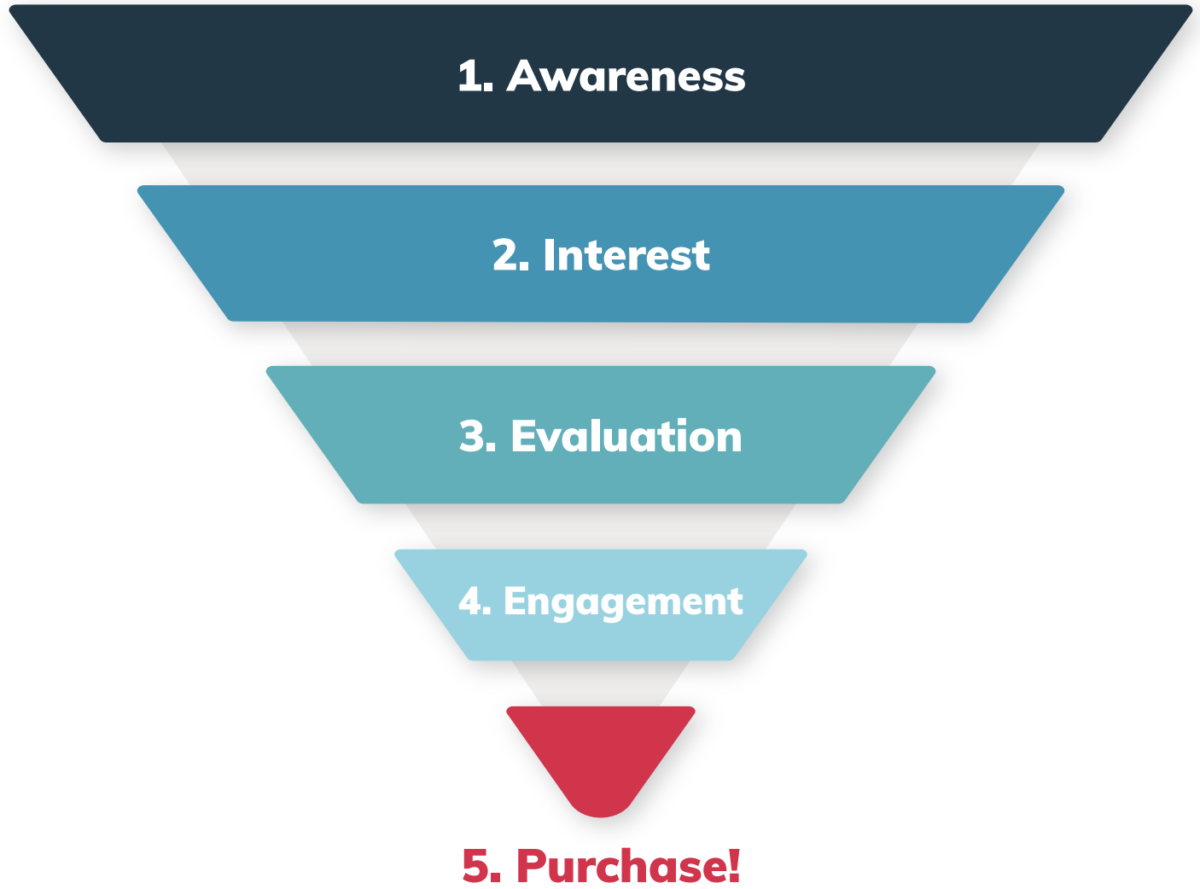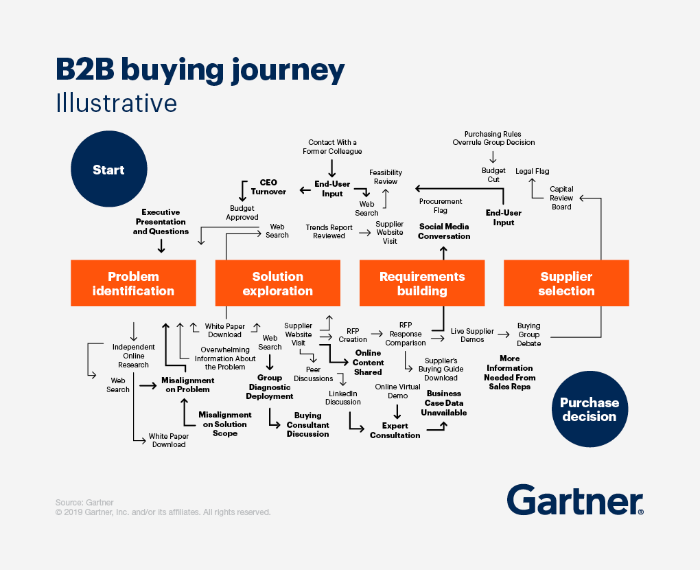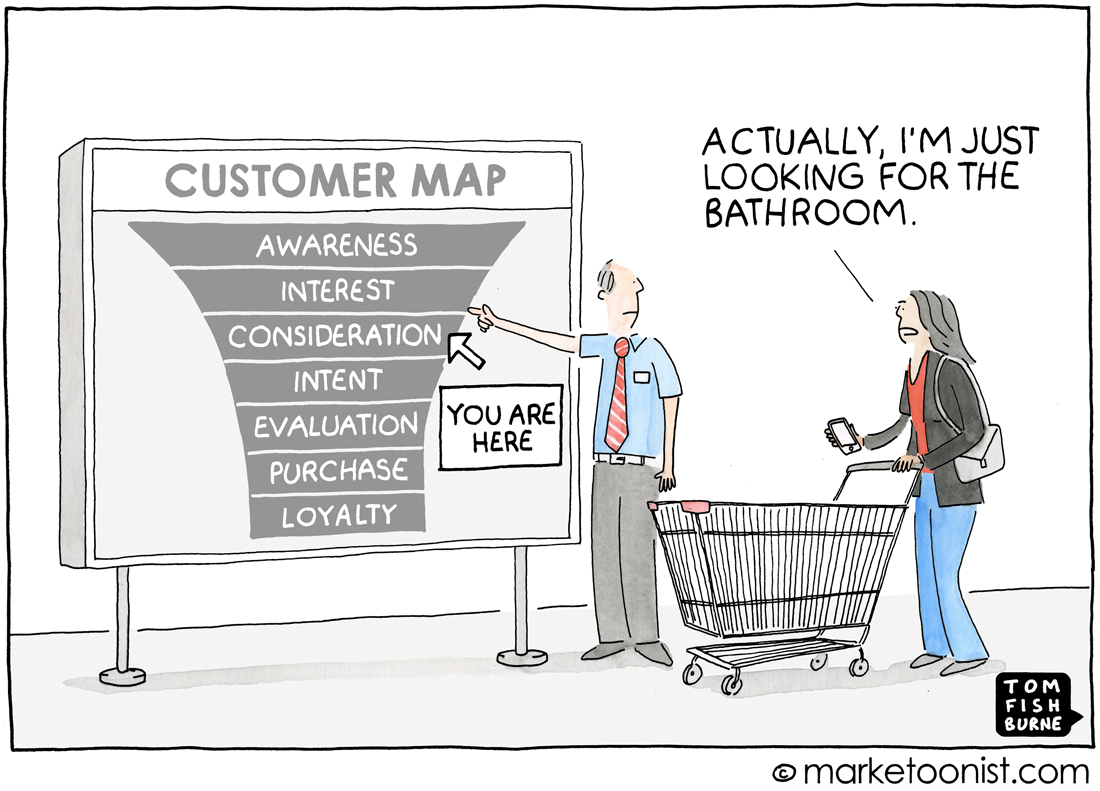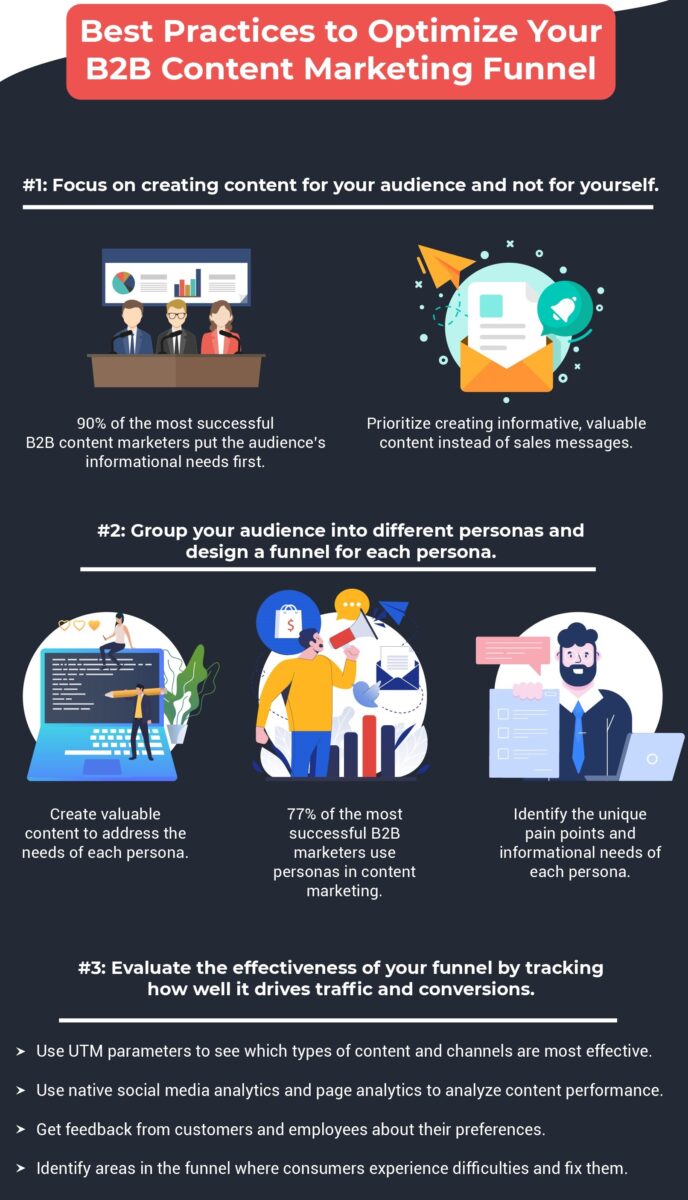Are you tired of feeling like you’re pouring all your marketing efforts down a bottomless pit? Well, fear not! Today, we’re going to talk about how to optimize your B2B marketing funnel so you can stop throwing spaghetti at the wall and start seeing some real results.
Now, I know what you might be thinking – “Ugh, another boring article about marketing funnels. Pass.” But trust me, this isn’t your run-of-the-mill sales pitch. We’re going to dive deep into the nitty-gritty of the B2B marketing funnel and give you the tools you need to turn those leads into customers and those customers into loyal fans.
So buckle up, grab your favorite caffeinated beverage, and get ready to make the most of your marketing strategy. It’s time to optimize that funnel like a pro!
Table of Contents
What is B2B Marketing Funnel?
Picture this: you’re planning a road trip. You’ve got your map, your snacks, and your favorite Spotify playlist queued up. But what’s missing? Oh, right – a destination! And that’s exactly what the B2B marketing funnel provides for your marketing efforts.
At its core, the B2B marketing funnel is a roadmap that guides potential customers on a journey from awareness to purchase. It’s a way of organizing your marketing efforts into specific stages that align with the buyer’s journey, so you can better target and nurture leads as they move through the funnel.

Here’s a quick breakdown of the stages of the B2B marketing funnel:
- Awareness: This is where potential customers become aware of your brand and what you have to offer.
- Interest: Once they’re aware of your brand, they start to show interest in your products or services.
- Consideration: At this stage, they’re considering whether or not to make a purchase from you.
- Decision: They’ve made their decision and are ready to make a purchase.
- Retention: Congratulations, you’ve made a sale! Now it’s time to retain that customer and turn them into loyal fans.
Suggested Reading: 12 B2B Marketing Trends for the AI-Powered Future
But why is B2B Marketing Funnel so important?
Well, imagine trying to drive to your destination without a map or a GPS. You might eventually get there, but it would take a lot longer, and you might make a few wrong turns along the way.
Similarly, navigating the twists and turns of a B2B buyer journey is like trying to solve a Rubik’s cube blindfolded while riding a unicycle – tricky, but not impossible with the right strategy!
The B2B marketing funnel ensures that your marketing efforts are targeted, efficient, and effective, so you can reach your destination (i.e., sales and revenue) as quickly and smoothly as possible.

Now that you understand the basics of the B2B marketing funnel, let’s dive deeper into each stage and see how you can optimize your efforts at every step of the way.
Suggested Reading: B2B Linkedin Marketing Strategy – 5 Ways To Increase Your ROI
Stages of B2B Marketing Funnel
Get ready to fall in love with the stages of the B2B marketing funnel!
Just like any romantic relationship, the journey from stranger to loyal customer is a series of steps.
In this section, we’ll break down the stages of the B2B marketing funnel and compare them to different phases of a relationship.
Stage 1: Awareness – The Flirting Stage:
This is the stage where you catch the eye of a potential customer. They may have stumbled upon your website or social media profile, or maybe they were introduced to you through a friend.
Just like in a flirting stage, you want to make a good first impression and let them know you’re interested in getting to know them better.
Stage 2: Interest – The First Date
Once you’ve caught their attention, it’s time for a first date. In the B2B marketing world, this means providing valuable content and resources that showcase your expertise and build trust with the customer.
You want to keep their interest and show them that you’re a good match for their needs.
Stage 3: Consideration – The Relationship Talk
Things are starting to get serious now. You’ve gone on a few dates, and it’s time to have the relationship talk. In the B2B marketing funnel, this means presenting your products or services as a solution to the customer’s problems.
You want to show them that you’re a reliable partner and can meet their needs better than anyone else.
Stage 4: Decision – The Proposal
It’s time to make it official! In the decision stage, the customer has decided to commit to your product or service. Just like a proposal, this stage requires a clear ask and a commitment to a long-term partnership.
Stage 5: Retention – The Happily Ever After
Congratulations, you’ve got a customer! But the work isn’t over yet.
In the retention stage, you want to keep the relationship strong and ensure that your customer is happy with their decision to choose you. This means providing excellent customer service, personalized experiences, and continuing to provide value to the customer.

In the next section, we’ll provide you with a template to create your own B2B marketing funnel that will help you navigate each stage of the customer journey.
Related Post: Top 40 B2B Lead Generation Ideas
B2B Marketing Funnel Template
Are you ready to cook up a successful B2B marketing campaign? Here’s a template that can serve as your recipe for success.
Ingredients for the B2B Marketing Funnel Template
Just like a recipe, you need to gather all the necessary ingredients to make a delicious B2B marketing funnel. Here are the key elements that should be included in your template:
1. Buyer Persona
- A buyer persona is a semi-fictional representation of your ideal customer based on research and data.
- Example: Let’s say you’re a B2B software company targeting small business owners. Your buyer persona could be a middle-aged male entrepreneur who values productivity and efficiency and is looking for a software solution that can streamline his business operations.
2. Awareness Stage Content
- Content that is designed to attract the attention of potential customers and create brand awareness.
- Example: A blog post or social media post that highlights a common problem that your target audience faces and provides some high-level solutions.

3. Interest Stage Content
- Content that is designed to engage potential customers and provide them with more detailed information about your product or service.
- Example: A webinar or whitepaper that dives deeper into the problem that your target audience is facing and provides more in-depth solutions.
4. Consideration Stage Content
- Content that is designed to educate potential customers about your product or service and position it as a solution to their problem.
- Example: A product demo video or case study that showcases how your product has helped other businesses solve similar problems.
A recent survey in the United States revealed that virtual product and service demonstrations are becoming increasingly popular in B2B e-commerce. The survey found that 70% of professionals made business purchases after a metaverse or virtual reality presentation, and another 21% expressed interest in trying it out even though they haven’t had the opportunity yet.
5. Decision Stage Content
- Content that is designed to persuade potential customers to make a purchase or take the next step in the sales process.
- Example: A free trial offer or a personalized proposal that outlines the specific benefits of your product or service for the customer’s business.
6. Lead Nurturing Content
- Content that is designed to keep potential customers engaged and move them closer to making a purchase.
- Example: A regular email newsletter that provides helpful tips and information related to your product or service, along with occasional promotional offers.
7. Retention Strategy
- A set of tactics and activities designed to retain customers and encourage repeat business.
- Example: A customer loyalty program that rewards customers for their continued business, or a proactive customer support team that is always available to address any issues or concerns.
B2B Marketing Funnel KPIs and Benchmarks
Tracking key performance indicators (KPIs) and benchmarks is crucial for measuring the effectiveness of your B2B marketing funnel. By analyzing these metrics, businesses can identify areas for improvement and make data-driven decisions to optimize their funnel.
Here are some of the most important KPIs and benchmarks to track:
- Traffic: The number of visitors to your website and landing pages.
- Conversion rate: The percentage of visitors who take a desired action, such as filling out a form or making a purchase.
- Cost per lead (CPL): The amount spent on generating a single lead.
- Lead-to-customer conversion rate: The percentage of leads who become paying customers.
- Customer acquisition cost (CAC): The total cost of acquiring a new customer.
- Customer lifetime value (CLV): The total amount of revenue a customer generates for your business over their lifetime.
- Return on investment (ROI): The amount of revenue generated compared to the cost of your marketing efforts.
- Sales cycle length: The amount of time it takes for a lead to become a customer.
- Funnel abandonment rate: The percentage of leads who drop out of the funnel at each stage.
- Funnel velocity: The speed at which leads move through the funnel.
By monitoring these KPIs and benchmarks, businesses can gain valuable insights into their B2B marketing funnel and make data-driven decisions to optimize their strategy for success.
Try this: Social Media Advertising ROI Calculator

Conclusion
Remember, just like any relationship, the key to success in the B2B marketing world is to take things slow, build trust, and nurture your leads with care. So, if you want to win over the hearts (and wallets) of your target audience, start optimizing your funnel today.
Use the tactics, templates, and benchmarks we’ve shared to create a recipe for success that’s unique to your business. And don’t forget to track your progress with the help of KPIs, just like a fitness tracker.
With a little bit of effort and a lot of charm, you’ll be sure to make a lasting impression on your customers.
So go ahead, put these tips into action, and watch your B2B marketing funnel bloom into a beautiful, profitable relationship!

Ali is a digital marketing blogger and author who uses the power of words to inspire and impact others. He has written for leading publications like Business2Community, Inc. Magazine, and Marketing Profs. When not writing, he enjoys spending time with his family.
